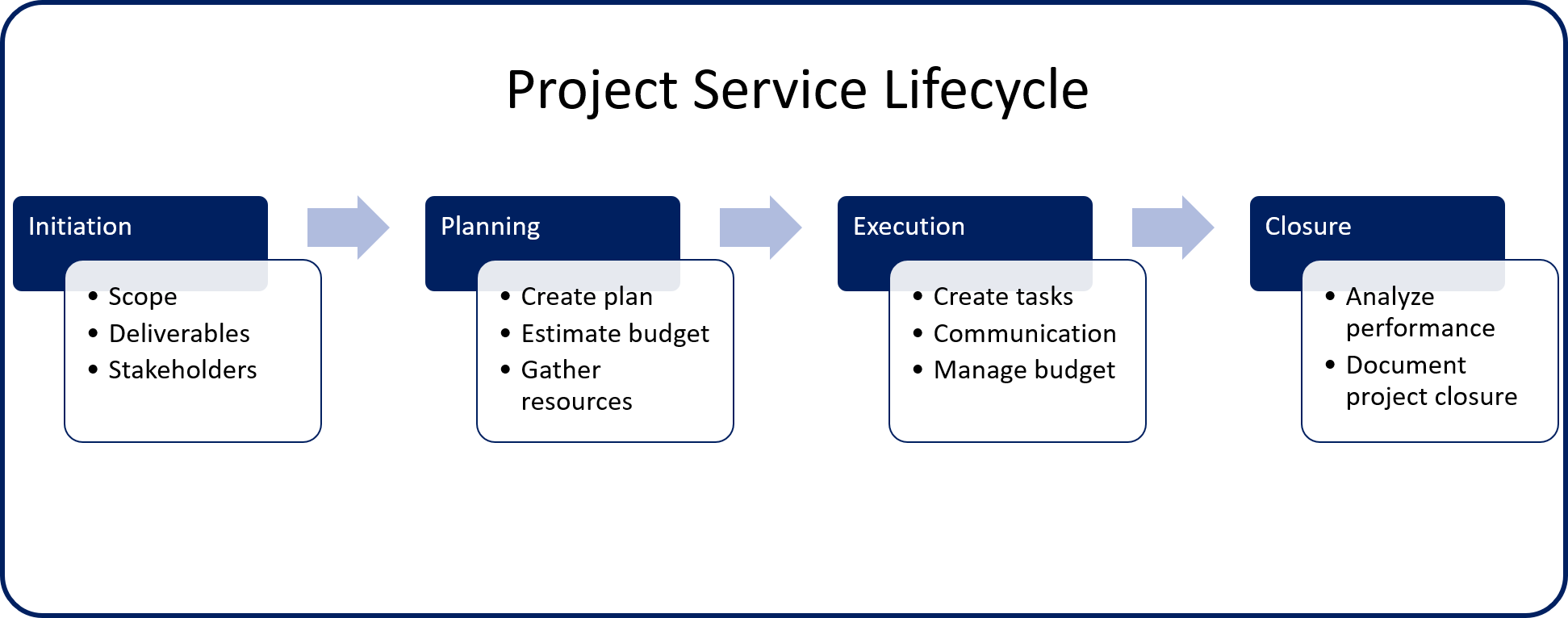| Mustafa Usmani
A project in Dynamics is a venture to create a product or provide some sort of service to the client, and over the course of its life it goes through various stages which helps in managing several aspects of the project itself. Project lifecycle consists of 4 phases which are:

So, the flow above gives us an overview of what phases a project goes through and now let’s look at each phase in detail.
Initiation
This is the first and most key step of a project. When initiating a project, you identify its goals, needs, the problems you might face, the overall impact of the project and then find ways to cater for all these factors. The initiation phase is broken down into 3 sub-steps.
- SCOPE - That's where you define a clear understanding of the project, its goals, the strategies that will be used throughout the project, its requirements and their budgeting.
- DELIVERABLES – This is where you clarify the product or the service you will provide.
- STAKEHOLDERS – Stakeholder are those people or resources that will have an influence on the project. They can be your co-workers or even your superiors, and they are the ones who are affected by the project’s outcome.
Planning
After initiation comes Planning, where you start to structure everything you initially identified in a project and break down all the milestones into smaller manageable tasks, build a team to and prepare a schedule for their respective tasks.
Once the tasks have been identified and a team or teams have been introduced, you proceed to create a financial plan where to chalk down how much time and money will be spent on the project beforehand. Other than that, you also need to take account of all the blockers that might slow down the process and try to minimize them before they occur at the actual execution phase of the project.
Execution
This is where you put all your planning into action and start to:
- Assign tasks to teams or individuals and make sure it is equivalent to their capabilities.
- Provide insights and updates to stakeholders about the progress.
- Ensure tasks are more Quality over Quantity focused.
- Monitor project budgeting in terms of resources.
Closure
Finally, once all the tasks are completed and all the milestones have been achieved, it is time to analyze:
- Project Performance: Whether all the tasks and goals of the project were met on time and on budget.
- Team Performance: Whether the produced efficient and quality work.
- Documentation and Reviews: Making sure every aspect of the project lifecycle is documented and reviewed by the client and the stakeholders, making sure nothing is left behind.
Join us next time, as we continue our journey of learning canvas apps.Click here to learn more about Imperium's Power Apps Services. We hope this information was useful, and we look forward to sharing more insights into the Power Platform world.

